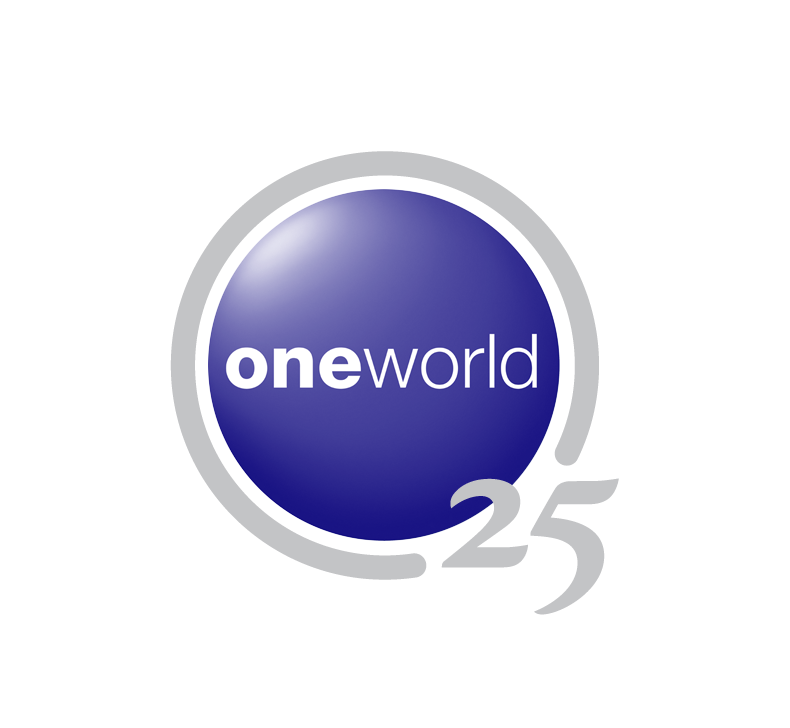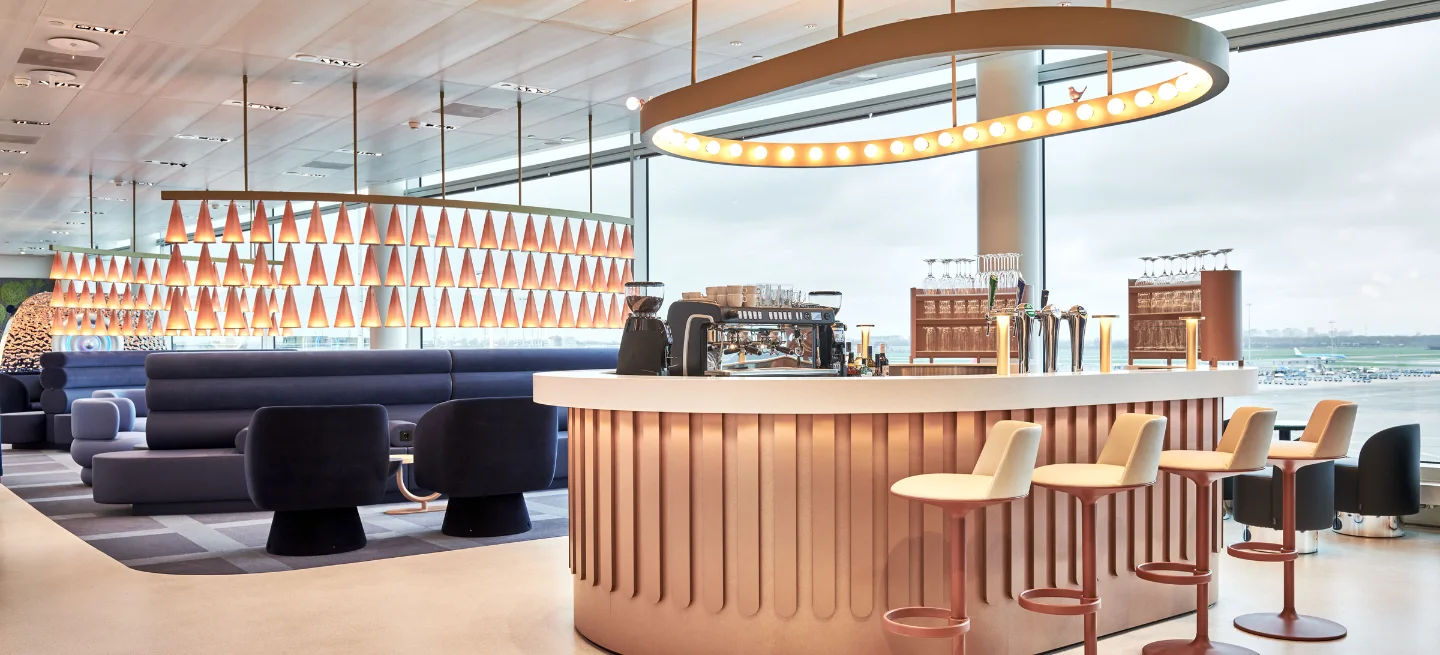oneworld's 'total value proposition' makes it best alliance by far for Japan Airlines
03 dicembre 2009
• CEOs of all oneworld airlines reaffirm support to their Japanese partner
• US$1.8 billion investment and increased revenue pledged
• Best partners, hubs and network fit - and best for premium customers
• Best chance for stable and successful future
The leaders of all Japan Airlines' partners in the oneworld® alliance issued this declaration today to their colleagues at the airline, to the Japanese government and to the country's flying public: oneworld is by far the best alliance for JAL.
To reinforce their commitment to retaining JAL as a valued, full member of the world's leading quality airline alliance, they have put together a "total alliance value proposition" for JAL totaling some US$1.8 billion of investment and additional revenue, which outstrips by threefold any other offer to lure JAL away from oneworld. For a detailed breakdown, see below.
The package was finalised at a meeting of the oneworld Governing Board today, on the sidelines of an International Air Transport Association (IATA) event in Montreal, Canada.
The Chief Executives of the alliance's ten other member airlines reaffirmed their belief that oneworld offers JAL by far the best revenue opportunities, the best access to funding, the best network fit, the best quality partners, the best hubs, the best experience to help it adapt to the new competitive and financial environment - and the best prospect for a stable and successful future.
oneworld Governing Board Chairman and American Airlines' Chairman and Chief Executive Gerard Arpey said: "The oneworld alliance already has a significant investment in the success of Japan Airlines, and we are prepared to do even more to ensure that American, oneworld and JAL have a successful partnership for the long-term. We believe this in turn will allow JAL to produce significant benefits for all of its stakeholders - the travelling public, employees and investors, and certainly the Japanese tourism and aviation industries.
"The total alliance proposition developed by American Airlines, as JAL's biggest partner, our fellow members of oneworld and our financial partners TPG is very clearly vastly superior in every aspect to anything anyone else is offering. When you add up the facts, the most value and best long-term solution for JAL comes from remaining with oneworld so that it can continue to focus with partners on building a stronger foundation for the future."
Speaking on behalf of the other oneworld CEOs, oneworld Managing Partner John McCulloch added: "Japan Airlines is a highly valued member of oneworld - and oneworld and its member airlines are determined to build on our long-standing, successful and mutually beneficial working relationships with JAL. A change in alliances, at the best of times, carries a great deal of risk. Doing so at a time when the industry is experiencing such turbulence adds even more danger.
"oneworld's proposals are based on years of experience of working with Japan Airlines. So apart from the overall vastly superior offer we are collectively making, we also deliver certainty and stability."
Key elements of the "total alliance value proposition" include proposals to:
• Invest in the restructuring of JAL, through a link with the TPG investment group, which has indicated it, with American Airlines, would be willing to provide funding of up to US$1.1 billion, should this be welcomed by the airline and the Japanese government.
TPG is the world's most experienced and successful investor in the airline industry, presenting JAL and the Japanese government with far wider funding resources than would be available through any other airline grouping.
• Develop an anti-trust immunised (ATI) joint venture agreement across the Pacific with American Airlines, with an application for ATI to be filed immediately after agreement is reached between the government of Japan and USA for "open skies" between the two countries.
This would result in far more extensive co-operation between American Airlines and JAL - leading to some US$100 million a year in revenue for the Japanese carrier on top of the US$500 million a year it already enjoys through its oneworld relationships. Enhancing its links with American in this way would, over a 10-year period, represent additional revenues of some US$700 million on a net present value basis.
Regulators in the US are likely to give an American-JAL partnership speedy ATI approval, as it would foster balanced competition among airline alliances across the Pacific, maintaining the share of Japan-USA passenger traffic among the three global alliances at around one-third each.
If JAL were to consider joining another alliance, in this case SkyTeam, it would raise intractable competition issues and face severe regulatory opposition in the US because of the stranglehold this combination would hold on Japan-USA travel, with more than 60 per cent of the market This also would provide SkyTeam and Star a 93 per cent duopoly and reduce competition rather than increase or maintain it - whereas the US regulators have promoted inter-alliance competition to increase, not reduce, inter-alliance competition and consumer choice. It is in the best interests of customers flying between the USA and Japan to have three robust alliances competing for their business instead of two. For this reason, it is hard to envisage a scenario in which JAL-Delta could achieve immunity on any commercially acceptable basis. The position is exacerbated by SkyTeam's Delta/Northwest operating a hub alongside JAL at its Tokyo Narita base.
With JAL's main domestic competitor All Nippon Airways (ANA) also widely expected to file for transpacific ATI with its Star partner United Airlines, American Airlines represents most likely the only opportunity for JAL to gain ATI with a US partner, with all that means in terms of strengthening its competitive position and increasing its revenues. Even a delay in applying for - and therefore in receiving - ATI could put JAL at a disadvantage to its nearest competitor.
• Expand co-operation with the two European carriers serving Japan - British Airways and Finnair - to provide JAL with substantially improved access to Europe over two of the continent's most attractive gateways for Japanese travellers, in London Heathrow and Helsinki.
British Airways (BA) also is proposing far more extensive co-operation with JAL, including code-sharing far more widely across each other's networks.
At BA's London Heathrow hub, JAL and all other oneworld on-line partners, along with some BA services, have just consolidated operations in Heathrow's Terminal 3, where later this month JAL will start sharing BA's lounges for premium customers.
At Tokyo Narita, BA plans to move its operations into Terminal 2, alongside those of JAL and all other on-line oneworld partners.
These developments would radically improve the connectivity and network reach JAL could provide throughout Europe, delivering further substantially increased revenue.
With the strong financial and business links between the UK and Japan, London Heathrow is by far the most popular destination in Europe for premium passengers flying between the continent and Japan.
Additionally, Finnair's Helsinki hub is growing in importance and attractiveness as a gateway between Asia/Pacific and Europe, thanks to its geographical position and investment by the airport owner in excellent transfer facilities. Finnair is offering to work far more extensively with JAL over Helsinki, with more wide-spread code-sharing providing another excellent prospect, besides London Heathrow, for seamless connections throughout Europe and more revenue opportunities.
• Develop its presence in the attractive Latin America market through expanded relationships with oneworld partners LAN and Mexicana.
oneworld's members serve 60 per cent more destinations than other alliances in the competitive South America region, and both oneworld partners in Latin America, LAN and Mexicana, have offered to code-share far more widely with JAL. For example, Mexicana recently received approval to place the JL code on its Vancouver-Mexico City flights, following JAL's recent decision to suspend its own flights on this route. These actions will ensure that JAL's customers have the best network and co-operation opportunities in this increasingly important part of the world.
• Increase code-sharing with other oneworld members, building revenue for JAL still further. Iberia has proposed to JAL an expansion in the number of destinations covered by their code-share agreement. Talks with a similar aim are also currently underway between Cathay Pacific Airways and JAL,
• Identify opportunities for increased airport co-location for JAL alongside its oneworld partners at more key airports worldwide, making it easier for passengers to transfer between the airline's flights and those operated by its alliance partners, strengthening its competitive positioning still further.
British Airways' planned terminal move at Tokyo Narita will complete the consolidation of all on-line oneworld partners alongside JAL in its Terminal 2 base there. With all the alliance's other on-line carriers co-located since 2007, it has almost halved minimum connections times between their flights at the airport to as little as 60 minutes, and made the overall transfer process smoother and easier.
Like London Heathrow and Helsinki, oneworld hubs are generally regarded as far more attractive transfer hubs for Japanese travellers, and more co-location will make them more attractive still.
• Draw on Qantas' expertise in developing its Jetstar, value-based airline and its two-brand strategy.
Qantas is widely recognised as the world leader in developing a value-based airline within a traditional network airline group and operating its business as a two-brand offering. It has offered JAL full access to this expertise should it be interested in drawing upon it, enabling it maximise its ability compete in a sector of growing importance in today's airline industry environment.
The oneworld package also stresses that remaining with oneworld will enable JAL to stay part of:
• A partnership with American Airlines that provides the best access for premium customers on trans-Pacific flights. Some alliances might focus on airlines' ability to deliver more passengers, but what matters most is the quality of the passenger revenue. In the USA, for instance, oneworld's hubs include the business centres of Los Angeles, Chicago, Miami, New York and Dallas/Fort Worth. oneworld analysis indicates that if JAL chooses to move its main US transfer hubs to an alliance with bases in such places as Minneapolis/St. Paul, Detroit, Salt Lake City and Atlanta, then it would likely lose a great deal of passenger traffic - particularly premium travellers - to its competitors.
• The world's leading quality alliance. oneworld has the highest quality partners from each region worldwide. They are all carriers it can feel comfortable in passing on its most valued customers. They win more alliance proportionately than competitors in other alliances - and oneworld has itself extended its lead as the most prolific winner of alliance awards, picking up the World Travel Awards' Leading Airline Alliance title for the seventh year running. oneworld is the only alliance to have won this award since it was first introduced.
• The only alliance with a truly global network, as the only alliance member airlines based in every continent and the only alliance with any member based in South America, in Australia or in Asia's Middle East.
• The only alliance whose member airlines have collectively been profitable since its emergence a decade ago, with oneworld member airlines reporting collective net profits of US$8.3 billion in 10 years since oneworld was launched.
• With oneworld, Japan Airlines would also avoid a massive network overlap. In Asia, SkyTeam members Delta/Northwest, Korean and China Southern all compete for the same regional slice of the alliance pie that in oneworld JAL has to itself. Avoiding network overlap maximizes passenger and revenue flows to JAL from its alliance partners, helping keep more of its routes and frequencies financially viable.
About oneworld
oneworld brings together some of the best and biggest names in the airline business - American Airlines, British Airways, Cathay Pacific, Finnair, Iberia, Japan Airlines, LAN, Malév Hungarian Airlines, Mexicana, Qantas and Royal Jordanian, and around 20 affiliates including American Eagle, Dragonair, LAN Argentina, LAN Ecuador and LAN Peru. Russia's S7 Airlines will join the alliance in 2010.
Between them, these airlines:
- Serve almost 750 airports in nearly 150 countries, with some 8.500 daily departures.
- Offer nearly 550 airport lounges for premium customers.
- Carry some 330 million passengers a year.
- Employ 300.000 people and operate almost 2.500 aircraft.
- Generate some US$100 billion annual revenues in total.
It is the only alliance with any airlines based in South America, Australia or Asia's Middle East.
The alliance enables its members to offer their customers more services and benefits than any airline can provide on its own. These include a broader route network, opportunities to earn and redeem frequent flyer miles and points across the combined oneworld network and more airport lounges. oneworld also offers more alliance fares than any of its competitors.
oneworld was voted the World's Leading Airline Alliance for the seventh year running in the latest (2009) World Travel Awards. It is the only winner of this award since it was introduced in 2003.




